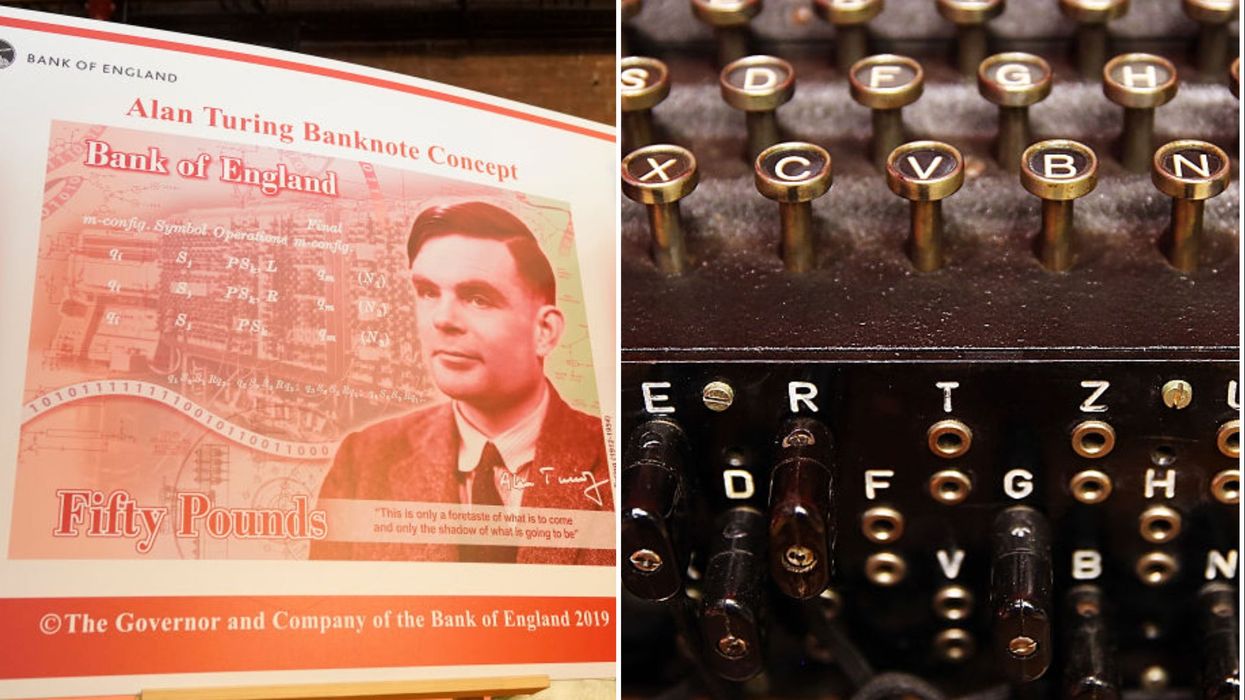News
Harriet Brewis
Mar 25, 2021

Even Alan Turing himself may have found the new puzzle a head-scratcher
Getty Images
Puzzle fans rejoice: the mother of all challenges has just been created.
GCHQ has released what it describes as its “most difficult puzzle ever” in honour of Alan Turing appearing on the new £50 note.
Officials at the cyber and intelligence agency said their new treasure hunt involving 12 riddles might even have left the genius codebreaker “scratching his head”.
Turing was a pioneer of modern computing and hugely instrumental in breaking the German Naval Enigma cipher in 1942, at Bletchley Park – GCHQ’s wartime home.
The Bank of England revealed the note’s design featuring the scientist and mathematician on Thursday and the puzzles are based on its unique design features.
Read more:
- TikTok user’s bikini pic accidentally features an X-rated optical illusion
- White headmaster forces black student to apologise the ‘African way’
- Uber passenger who coughed on driver faces up to 16 years in jail
- People are hijacking the Joe Biden fall hashtag to make an important point
These include technical drawings for the British Bombe – the machine designed by Mr Turing to break Enigma-enciphered messages.
GCHQ officials said the full challenge could take an experienced puzzler seven hours to complete.
Colin, a GCHQ analyst and its chief puzzler, said: “Alan Turing has inspired many recruits over the years to join GCHQ, eager to use their own problem-solving skills to help to keep the country safe.
“So it seemed only fitting to gather a mix of minds from across our missions to devise a seriously tough puzzle to honour his commemoration on the new £50 note.
“It might even have left him scratching his head – although we very much doubt it.”
GCHQ’s director Jeremy Fleming has paid tribute to Turing who is the first gay man to appear on a banknote.
“Alan Turing’s appearance on the £50 note is a landmark moment in our history,” he said.
“Not only is it a celebration of his scientific genius, which helped to shorten the war and influence the technology we still use today, it also confirms his status as one of the most iconic LGBT+ figures in the world.
“Turing was embraced for his brilliance and persecuted for being gay.
“His legacy is a reminder of the value of embracing all aspects of diversity, but also the work we still need to do to become truly inclusive.”
Turing joined the Government Code & Cypher School – GCHQ’s wartime name – in 1938 to help with the code-breaking effort during the Second World War, working alongside Gordon Welchman.
In January 1940, he had a meeting in Paris with Polish counterparts, who gave him the insights he needed to design the Bombe.
The combination of the Bombe and the brilliant minds and perseverance of those working at Bletchley Park led to the breaking of Enigma.
In January 1952, Turing was prosecuted for “indecency” over his relationship with another man in Manchester, and was given a choice between imprisonment and probation on condition of undergoing hormone treatment.
In 1954, he took his own life.
More: How drawing my feelings helped my mental health through lockdown
Top 100
The Conversation (0)
Sort by













